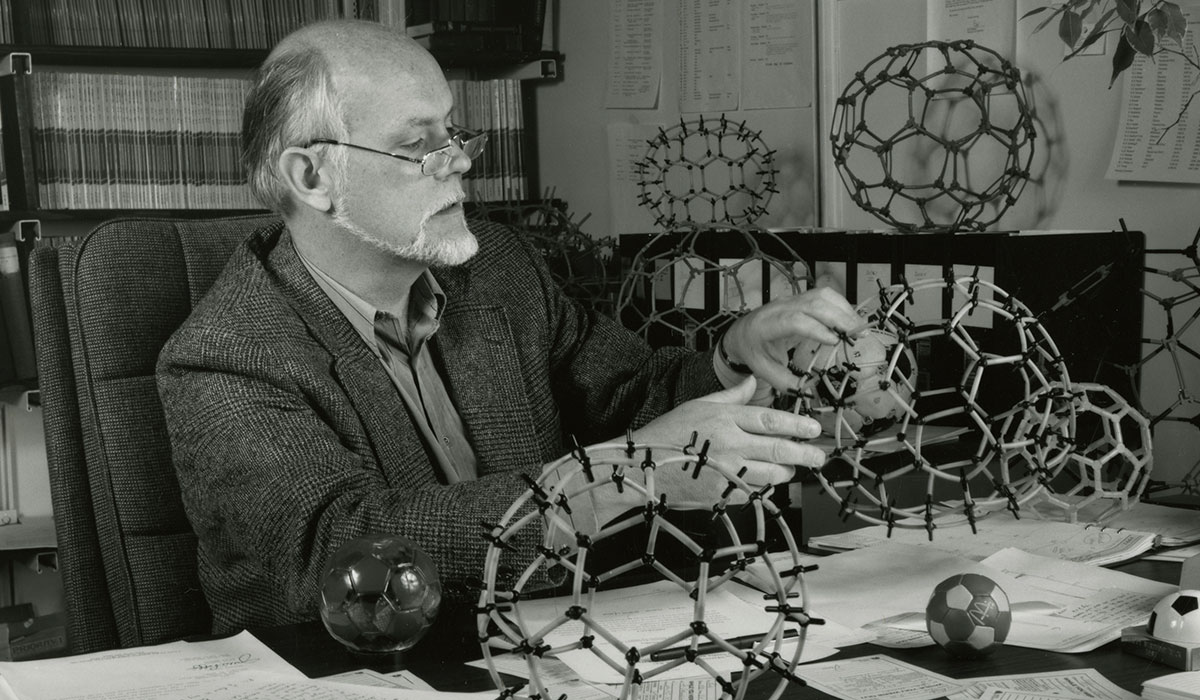
Richard Smalley, also known as Richard E. Smalley, was a renowned American chemist and Nobel laureate who made groundbreaking contributions to the field of nanotechnology. While many people may be familiar with his name, there are several surprising facts about Richard Smalley that are lesser-known. From his journey in academia to his innovative discoveries, Smalley’s life and work continue to inspire and enlighten scientists and researchers around the world. In this article, we will delve into 16 surprising facts about Richard Smalley that showcase his brilliance, passion, and impact on the field of science. So, let’s dive in and discover some intriguing aspects of this remarkable individual’s life!
Key Takeaways:
- Richard Smalley’s discovery of the buckyball revolutionized nanotechnology and earned him the Nobel Prize in Chemistry in 1996, showcasing the power of scientific innovation and perseverance.
- Smalley’s passion for science, dedication to ethical research, and love for jazz music left a lasting impact, inspiring future generations to pursue knowledge and make a positive difference in the world.
Early Years and Education
Richard Smalley was born on June 6, 1943, in Akron, Ohio. He showed an early interest in science and pursued his dreams by studying chemistry at Hope College in Holland, Michigan, where he obtained his bachelor’s degree.
Formation of the Buckyball
One of Smalley’s most groundbreaking achievements was his involvement in the discovery of the buckyball, a spherical molecule made of 60 carbon atoms. This breakthrough propelled nanotechnology into the mainstream and earned Smalley the Nobel Prize in Chemistry in 1996.
The Buckminster Fuller Connection
The buckyball was named in honor of the visionary architect Buckminster Fuller, known for his geodesic dome designs. Smalley drew inspiration from the dome’s structural integrity when he first encountered the unique carbon molecule.
The Promise of Nanotechnology
Smalley firmly believed in the potential of nanotechnology to revolutionize various industries, including medicine, electronics, and energy. His research paved the way for countless applications, from drug delivery systems to efficient solar cells.
Energy Solutions and the Hydrogen Economy
In addition to nanotechnology, Smalley dedicated much of his later years to tackling the global energy crisis. He championed the concept of a “hydrogen economy,” advocating for the use of hydrogen as a clean, abundant, and sustainable energy source.
Founding the Center for Nanoscale Science and Technology
In 2001, Smalley established the Center for Nanoscale Science and Technology at Rice University. This interdisciplinary research center continues to foster innovation and collaboration in the field of nanotechnology.
Impactful Collaborations
Throughout his career, Smalley collaborated with numerous scientists and researchers from around the world. His collaborative spirit led to significant advancements and breakthroughs in the field of nanotechnology.
Carbon Nanotubes
Smalley’s exploration of carbon nanomaterials extended beyond the buckyball. He played a pivotal role in characterizing and understanding the properties of carbon nanotubes, cylindrical structures composed of carbon atoms.
Overcoming Challenges
Smalley faced many obstacles throughout his scientific endeavors, but his perseverance and determination allowed him to overcome them. His relentless pursuit of knowledge and innovation serve as an inspiration to aspiring scientists.
Recognitions and Awards
In addition to the Nobel Prize, Smalley received numerous accolades for his contributions, including the Robert A. Welch Award in Chemistry and the National Medal of Science.
Global Outreach
Smalley was a passionate advocate for science education and the responsible use of technology. He traveled around the world, delivering lectures and engaging with communities to raise awareness about the potential of nanotechnology.
Balancing Science and Ethics
Smalley recognized the ethical challenges associated with emerging technologies and the importance of responsible research. He emphasized the need for scientists to consider the societal implications of their discoveries.
Legacy in Education
Smalley’s impact extends beyond his scientific achievements. He dedicated himself to teaching and mentoring future generations of scientists, imparting his knowledge and instilling a passion for discovery.
Smalley’s Love for Jazz
Beyond the lab, Richard Smalley was an avid jazz lover. He often found inspiration in the improvisational nature of jazz music and drew parallels between the creative processes in music and scientific discovery.
Books and Publications
Smalley co-authored several books and published numerous articles throughout his career, sharing his knowledge and insights with the scientific community and the broader public.
A Lasting Impact
Richard Smalley’s contributions continue to shape the world we live in today. His groundbreaking discoveries and unwavering dedication to scientific exploration have solidified his place in history as one of the most influential scientists of our time.
Richard Smalley’s incredible journey serves as a reminder of the power of curiosity, innovation, and the relentless pursuit of knowledge. His legacy lives on through the countless scientists inspired by his work, striving to make the world a better place through science and technology. The 16 surprising facts about Richard Smalley are a testament to his remarkable achievements and the enduring impact of his contributions.
Conclusion
In conclusion, Richard Smalley was an incredible figure who made significant contributions to the field of chemistry and nanotechnology. His groundbreaking research on carbon nanotubes and fullerenes revolutionized the way we think about materials and their applications.Smalley’s dedication to education and outreach also left a lasting impact. Through his efforts, he inspired countless students and researchers to pursue careers in science and engineering. His commitment to finding solutions for global challenges, such as sustainable energy and environmental sustainability, continues to inspire researchers and scientists worldwide.Richard Smalley’s legacy lives on through his groundbreaking discoveries, his commitment to education and outreach, and his unwavering pursuit of scientific knowledge. His work has and will continue to shape the future of chemistry and nanotechnology, making the world a better place for generations to come.
FAQs
1. What were Richard Smalley’s major contributions to the field of chemistry?
Richard Smalley’s major contributions include the discovery and characterization of fullerenes and carbon nanotubes. His research revolutionized the way we think about materials and their properties, opening up new possibilities for various applications in fields such as electronics, energy, and medicine.
2. How did Richard Smalley’s research impact the field of nanotechnology?
Smalley’s research on carbon nanotubes and fullerenes laid the foundation for the field of nanotechnology. These materials have unique properties, such as high strength and electrical conductivity, which make them ideal for various applications, including nanoelectronics, drug delivery systems, and energy storage devices.
3. What was Richard Smalley’s commitment to education and outreach?
Richard Smalley was passionate about inspiring and educating the next generation of scientists and engineers. He recognized the importance of science education and frequently gave lectures and presentations, engaging with students and the general public to promote scientific literacy and enthusiasm.
4. What are some of the global challenges Smalley addressed through his research?
Richard Smalley focused his research efforts on addressing global challenges, such as sustainable energy and environmental sustainability. He believed that nanotechnology could provide solutions for clean and efficient energy production, as well as help in developing sustainable materials and processes to minimize environmental impact.
5. How is Richard Smalley’s legacy being carried forward today?
Richard Smalley’s legacy lives on through the work of researchers and scientists around the world who continue to build upon his discoveries. His pioneering research on carbon nanotubes and fullerenes has paved the way for numerous advancements in nanotechnology, fueling innovation in various fields and inspiring future generations to push the boundaries of scientific knowledge.
Was this page helpful?
Our commitment to delivering trustworthy and engaging content is at the heart of what we do. Each fact on our site is contributed by real users like you, bringing a wealth of diverse insights and information. To ensure the highest standards of accuracy and reliability, our dedicated editors meticulously review each submission. This process guarantees that the facts we share are not only fascinating but also credible. Trust in our commitment to quality and authenticity as you explore and learn with us.


